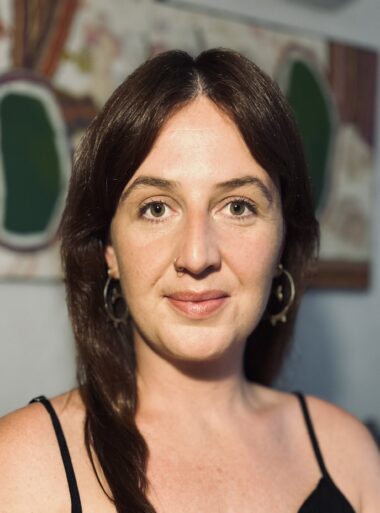
Writing Australia has revealed the winners of the 2025 Prime Minister’s Literary Awards, the richest literary prize in the nation. The awards celebrate the exceptional talents of emerging and established Australian writers, illustrators, poets, and historians.
The winners were celebrated at a ceremony at the National Library of Australia, Canberra hosted by Australian comedian, writer, actor, and television presenter, Alex Lee.
2025 Prime Minister’s Literary Awards – Winners
Australian History
Critical Care: Nurses on the frontline of Australia's AIDS crisis by Geraldine Fela (Published by New South Publishing)
Children's Literature
Leo and Ralph by Peter Carnavas (University of Queensland Press)
Fiction
Theory & Practice by Michelle de Kretser (Text Publishing)
Non-fiction
Mean Streak by Rick Morton (HarperCollins Publishing)
Young adult literature
The Invocations by Krystal Sutherland (Penguin Random House Australia)
Poetry
The Other Side of Daylight: New and Selected Poems by David Brooks (University of Queensland Press)
Minister for the Arts, The Hon Tony Burke MP, said:
“This year’s Prime Minister’s Literary Awards highlight the remarkable breadth of talent in Australian writing. From deeply researched histories to works of poetry and fiction that challenge and inspire.
“These works remind us of the power of literature to shape how we see ourselves as a nation.”
Director, Writing Australia Wenona Byrne, said:
“The 2025 winners reflect the richness and diversity of Australian storytelling. Each of these works brings a unique perspective, whether it is giving voice to critical moments in our history, sparking imagination in young readers, or offering new ways to think about the world around us.
"Writing Australia is proud to support these writers and to celebrate their outstanding achievements."
Both the winners and the shortlisted authors will share in a tax-free prize pool of $600,000, making it the richest literary prize in Australia. Each shortlisted entry will receive $5,000 with the winner of each category receiving $80,000.
More information:
WINNER - Australian History
Critical Care: Nurses on the frontline of Australia's AIDS crisis by Geraldine Fela
HIV and AIDS devastated communities across Australia in the 1980s and 1990s. Bringing together stories from across the country, historian Geraldine Fela documents the extraordinary care, compassion and solidarity shown by HIV and AIDS nurses. Critical Care unearths the important and unexamined history of nurses and nursing unions as caregivers and political agents who helped shape Australia’s response to HIV and AIDS.
Geraldine Fela is a Postdoctoral Research Fellow in the Department of History and Archaeology at Macquarie University. Her research and teaching traverses histories of gender and sexuality, labour, social movements and medicine. She has been widely awarded for her work examining the role of nurses during Australia’s HIV and AIDS crisis and has appeared in both scholarly and popular outlets.
WINNER - Children's Literature
Leo and Ralph by Peter Carnavas
Leo and Ralph have been best friends ever since Ralph flew down from one of Jupiter's moons. But now Leo's older, and Mum and Dad think it’s time to say goodbye to Ralph. When the family moves to a small country town, they hope Leo might finally make a real friend. But someone like Ralph is hard to leave behind...
Peter Carnavas writes and illustrates books for children. His books have been published widely across the world and have won many awards, including a Queensland Literary Award and the Patricia Wrightson Prize for Children’s Literature at the NSW Premier’s Literary Awards. Peter lives on the Sunshine Coast, Queensland, with his wife, two daughters, a dog and a cat.
WINNER - Fiction
Theory & Practice by Michelle de Kretser
Theory & Practice is a mesmerising account of desire and jealousy, truth and shame. It makes and unmakes fiction as we read, expanding our notion of what a novel can contain. The novel is set in 1986, and ‘beautiful, radical ideas’ are in the air. A young woman arrives in Melbourne to research the novels of Virginia Woolf.
In bohemian St Kilda she meets artists, activists, students - and Kit. He claims to be in a ‘deconstructed’ relationship, and they become lovers. Meanwhile, her work on the Woolfmother falls into disarray.
Michelle de Kretser, one of Australia’s most celebrated writers, bends fiction, essay and memoir into exhilarating new shapes to uncover what happens when life smashes through the boundaries of art.
WINNER - Non-fiction
Mean Streak by Rick Morton
Mean Streak is a gripping, utterly compelling and horrifying story of robodebt, and how, over the course of four and a half years, Australia's government turned on its most vulnerable citizens. Powerfully moving, deeply compelling and utterly enraging, Mean Streak reveals disturbing truths about the country we have become and the government that was. In the mode of a corporate thriller, this is a scouring cautionary tale of morality in public life gone badly awry - a story that is bigger than robodebt, and far from over.
Rick Morton is the author of four non-fiction books, including the critically acclaimed bestseller One Hundred Years of Dirt which was long listed for the Walkley Book of the Year 2018 and shortlisted for the National Biography Award (NBA) 2019. Rick is the senior reporter with The Saturday Paper and two times Walkley Award winner for his coverage of the Robodebt Royal Commission.
WINNER - Young adult literature
The Invocations by Krystal Sutherland
The Invocations is a seductive witchy thriller where, though both men and demons lurk in shadows, girls refuse to go quietly into the night.
Krystal Sutherland is the New York Times and indie bestselling author of House of Hollow, A Semi-Definitive List of Worst Nightmares and Our Chemical Hearts, which was adapted into a film by Amazon Studios. Her books have been published in more than twenty countries and nominated for the Carnegie Medal and YA Book Prize, among others. Originally from Australia, she has lived on four continents and currently calls London home.
WINNER - Poetry
The Other Side of Daylight: New and Selected Poems by David Brooks
David Brooks' longstanding concerns for justice and the relationship between human and non-human animals infuse and enliven his work. Wise, lyrical and timely, The Other Side of Daylight distils a long and honoured poetry career with a marvellous selection from his five previous volumes and The Peanut Vendor, a collection of forty-eight luminous new poems.
David Brooks is the author of six poetry collections and several novels and works of short fiction. The Book of Sei was heralded as the most impressive debut in Australian short fiction since Peter Carey’s and The Fern Tattoo was shortlisted for the Miles Franklin Literary Award. Until 2013 David taught Australian Literature at The University of Sydney. In recent years he has devoted his writing increasingly to animal advocacy. He lives with rescued sheep in the Blue Mountains. In 2014 he was awarded a 2015/16 Australia Council Fellowship for services to Australian and international literature.
#ENDS
For more information on the winners including judging panel comments, please visit: Prime Minister's Literary Awards on the Creative Australia website. Join the conversation by using thehashtag #PMLitAwards.
Judges comments, author photographs, biographies and book jacket imagery for all winners and shortlisted authors can be downloaded here
Event livestream will be available from 6.50pm, Monday 29 September. See link here.
Media contacts:
For interviews with authors
Debbie McInnes or Ineke Walker | DMCPR Media
Mobile: 0412 818 071 or 0412 455 977
Email: [email protected] [email protected]
For Writing Australia enquiries:
Brianna Roberts,
Senior Media Manager, Creative Australia
Phone: (02) 9215 9030 / 0498 123 541
Email: [email protected]
More information:
About the Prime Minister’s Literary Awards
The Prime Minister’s Literary Awards were established in 2008 to recognise individual excellence and the contribution that Australian authors make to the nation's cultural and intellectual life in the categories of non-fiction and fiction. In 2010 the young adult and children's literature categories were introduced, followed by poetry in 2012 and the inclusion of the pre-existing Prime Minister's Prize for Australian History.
Previous winners of the award include Tara June Winch, Omar Sakr, Gerald Murnane, Nam Le, Judith Brett and Jessica Au.
About Creative Australia
Creative Australia is the Australian Government’s principal arts investment and advisory body. We invest in and champion Australian creativity
We invest in creative people and organisations and help build audiences and markets for Australian creative work, both in Australia and internationally. Our establishing legislation, the Creative Australia Act 2023, requires us to uphold and promote freedom of expression in the arts and to support Australian arts practice that reflects the diversity of Australia. As a result, we invest in artists and organisations that represent a range of voices, perspectives and stories.
Writing Australia, located within Creative Australia, provides direct support to the literature sector to grow local and international audiences for Australian books, planning for new investments and providing strategic advice.
Writing Australia was established by the Creative Australia Act 2023. This was the final piece of legislation in establishing all the functions of Creative Australia under the National Cultural Policy, Revive: A place for every story, a story for every place.
About the National Library of Australia
The National Library of Australia holds the world’s largest collection of material relating to Australia and Australians. Its rich collection contains books, artworks, newspapers, maps, rare books, manuscripts, pictures, digital publications and more. The National Library’s vision is to inspire, connect, and empower everyone in the community by making the collection accessible to all.
The National Library offers engaging tours, a changing program of exhibitions, a dynamic array of events and public programs, and access to its Reading Rooms for those seeking knowledge, culture, or simply a place to connect. In addition to this, the National Library has a publishing arm that creates books that tell stories by and about Australians.
The National Library of the Australia is the exclusive presenting partner of Prime Minister’s Literary Awards.
Contact details:
For interviews with authors
Debbie McInnes or Ineke Walker | DMCPR Media
Mobile: 0412 818 071 or 0412 455 977
Email: [email protected] [email protected]
For Writing Australia enquiries:
Brianna Roberts
Senior Media Manager
T: +61 9215 9030 M: +61 498 123 541
[email protected]











